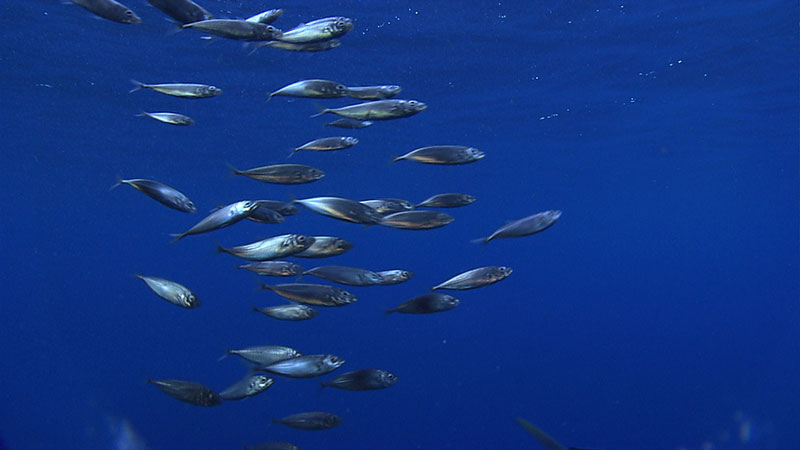December 13, 2020: School of Fish

Image courtesy of the NOAA Office of Ocean Exploration and Research, Gulf of Mexico 2014 Expedition. Download larger version (jpg, 1.1 MB).
A school of small fish passed in front of remotely operated vehicle Deep Discoverer as it was recovered at the end of a dive during the Exploration of the Gulf of Mexico 2014 expedition. This particular dive started with 5, 15-minute mid-water transects occurring in 100-meter (328-foot) intervals between depths of 800 and 1,200 meters (2,625 and 3,937 feet). During the transects, we saw shrimp, salps, ctenophores, bristle mouth fish, siphonophores, chaetognaths, “sinkers” (remnant mucus feeding sacks from larvaceans), hatchet fish, a sea butterfly, and a few different types of jellyfish.
The water column is the largest, yet least explored, habitat on Earth. Learn more about why we explore it in this Ocean Fact.